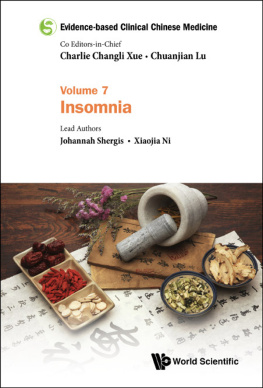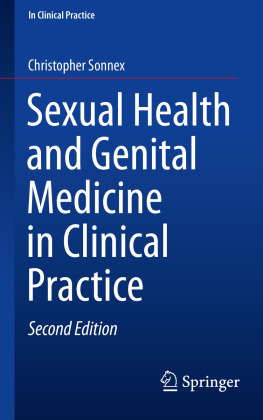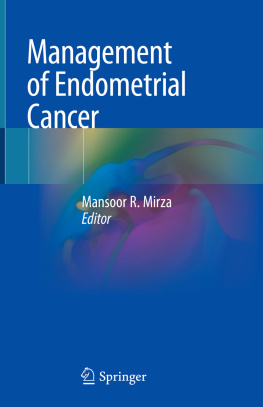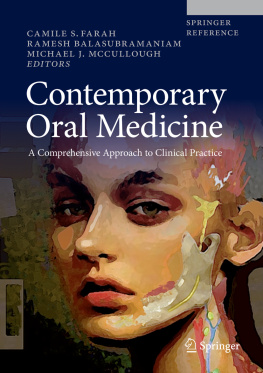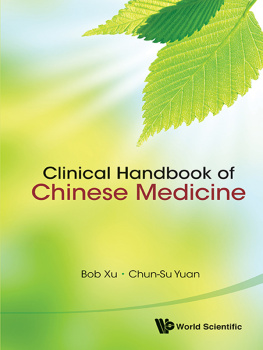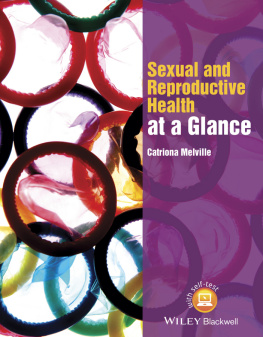The Endometrial Factor
A Reproductive Precision Medicine Approach
Edited by
Carlos Simn MD, PhD and
Linda C. Giudice MD, PhD

CRC Press
Taylor & Francis Group
6000 Broken Sound Parkway NW, Suite 300
Boca Raton, FL 33487-2742
2017 by Taylor & Francis Group, LLC
CRC Press is an imprint of Taylor & Francis Group, an Informa business
No claim to original U.S. Government works
Printed on acid-free paper
International Standard Book Number-13: 978-1-4987-4039-5 (Hardback)
This book contains information obtained from authentic and highly regarded sources. While all reasonable efforts have been made to publish reliable data and information, neither the author[s] nor the publisher can accept any legal responsibility or liability for any errors or omissions that may be made. The publishers wish to make clear that any views or opinions expressed in this book by individual editors, authors or contributors are personal to them and do not necessarily reflect the views/opinions of the publishers. The information or guidance contained in this book is intended for use by medical, scientific or health-care professionals and is provided strictly as a supplement to the medical or other professionals own judgement, their knowledge of the patients medical history, relevant manufacturers instructions and the appropriate best practice guidelines. Because of the rapid advances in medical science, any information or advice on dosages, procedures or diagnoses should be independently verified. The reader is strongly urged to consult the drug companies printed instructions, and their websites, before administering any of the drugs recommended in this book. This book does not indicate whether a particular treatment is appropriate or suitable for a particular individual. Ultimately it is the sole responsibility of the medical professional to make his or her own professional judgements, so as to advise and treat patients appropriately. The authors and publishers have also attempted to trace the copyright holders of all material reproduced in this publication and apologize to copyright holders if permission to publish in this form has not been obtained. If any copyright material has not been acknowledged please write and let us know so we may rectify in any future reprint.
Except as permitted under U.S. Copyright Law, no part of this book may be reprinted, reproduced, transmitted, or utilized in any form by any electronic, mechanical, or other means, now known or hereafter invented, including photocopying, microfilming, and recording, or in any information storage or retrieval system, without written permission from the publishers.
For permission to photocopy or use material electronically from this work, please access www.copyright.com (http://www.copyright.com/) or contact the Copyright Clearance Center, Inc. (CCC), 222 Rosewood Drive, Danvers, MA 01923, 978-750-8400. CCC is a not-for-profit organization that provides licenses and registration for a variety of users. For organizations that have been granted a photocopy license by the CCC, a separate system of payment has been arranged.
Trademark Notice: Product or corporate names may be trademarks or registered trademarks, and are used only for identification and explanation without intent to infringe.
Library of Congress Cataloging-in-Publication Data
Simn, Carlos, editor ; Giudice, Linda, editor.
The endometrial factor : a reproductive precision medicine approach / edited by Carlos Simn, Linda C. Giudice.
Boca Raton, FL : CRC Press/Taylor & Francis Group, [2017]
Includes bibliographical references and index.
LCCN 2016041251| ISBN 9781498740395 (hardback : alk. paper) | ISBN 9781498740401 (ebook)
Subjects: | MESH: Uterine Diseases--diagnosis | Endometrium--physiopathology | Uterine Diseases--complications | Uterine Diseases--therapy
Classification: LCC RG316 | NLM WP 440 | DDC 618.1/4--dc23
LC record available at https://lccn.loc.gov/2016041251
Visit the Taylor & Francis Web site at
http://www.taylorandfrancis.com
and the CRC Press Web site at
http://www.crcpress.com
Preface
The relevance of the endometrial factor in reproductive medicine is gradually gaining momentum. The Endometrial Factor was carefully conceived with world experts to be a compendium of critically evaluated, state-of-the-art basic and clinical knowledge about the human endometrium that impacts or will impact clinical practice.
This new text updates the advances in the diagnosis and treatment of the uterine or endometrial factor in the management of the infertile patient in the context of precision medicine. is devoted to the description of all you need to know about the human endometrium, by Linda C. Giudice, coeditor of this book. It is followed by an update of diagnostic possibilities: noninvasive diagnosis using imaging, by Sanja Kupesic Plavsic; molecular diagnosis of endometrial receptivity, by Jose Miravet-Valenciano; molecular diagnosis of endometriosis, by Lusine Aghajanova; microbiological diagnosis of the human endometrial microbiomaendometritis, by Inmaculada Moreno; and invasive diagnosis through hysteroscopy, by Luk Rombauts.
focuses on specific reproductive and medical disorders and their clinical impact on the endometrial factor in a personalized manner. The endometrium is analyzed in polycystic ovary syndrome patients by Terhi T. Piltonen, in obesity by Ruth B. Lathi, in the presence of fibroids by Serdar Bulun and adenomyosis by Ivo Brosens.
updates current therapeutic options for the endometrial factor in a critical manner: from effects of classical hormonal treatments by Hugh S. Taylor and the management of dysfunctional uterine bleeding by Hilary Critchley, to immunological treatment by Mary Stephenson, analysis of empirical unproven treatments by Nick S. Macklon, and endometrial scratching by Claire Bourgain. New stem cell therapies in the atrophic endometrium and Ashermans syndrome are addressed by Hugh S. Taylor. Finally, we discuss what to do when the uterus is absent or not functional, including surrogacy by Molly Quinn and Heather Huddleston and uterine transplantation by Mats Brnnstrm.
addresses the ultimate function of the endometriummodulating and facilitating embryonic implantation. The interaction between the endometrium and the preimplantation embryo is presented by Felipe Vilella, and the establishment of pregnancy through different embryo transfer strategies by Siladitya Bhattacharya.
The book is introduced by the views of a pioneer, Peter A. W. Rogers, in pursuit of a better understanding of endometrial function on the hoped-for pathway to precision medicine.
We express our utmost appreciation to all of our international best-in-class colleagues who have graciously contributed to the realization of this publication; we are grateful for the time and effort they devoted. We hope that readers will find the contents of this book useful as a reference and a valuable tool for continued advancement in the understanding and management of the endometrial factor in reproductive medicine.
Carlos Simn and Linda C. Giudice
2016
Foreword: An eye to the future
Peter A. W. Rogers
The advent of in vitro fertilization (IVF) more than 35 years ago revolutionized reproductive medicine. While the goal was to treat infertile couples, the techniques that were developed generated a huge amount of new information on reproductive endocrinology, ovarian function, ovulation, fertilization, preimplantation embryology, implantation, and early pregnancy. This knowledge dividend from IVF continues today, as exemplified by chapters in this book covering advances in areas such as pelvic ultrasound, the impact of obesity on the endometrium, and the rapidly emerging field of the microbiome. The importance of this reproductive medicine research is brought sharply into focus by a recent analysis of data from the 2010 Global Burden of Disease Study (). This work reported a systematic analysis of years lived with disability (YLD) for 1160 sequelae of 289 diseases and injuries. Within the list, gynecological diseases contribute 146 YLD per 100,000 years, with major diseases being fibroids (44 YLD), polycystic ovary syndrome (40 YLD), genital prolapse (26 YLD), premenstrual syndrome (18 YLD), and endometriosis (8 YLD). To put this gynecological disability burden in perspective, the same study reports 161 YLD per 100,000 years for HIV/AIDS and tuberculosis combined, 99 YLD for Alzheimers and other dementias, and 55 YLD for rheumatoid arthritis. Most would agree that the investment by government into improving outcomes for gynecological diseases does not match that for these other higher-profile diseases with similar YLD impacts. This is an issue that requires ongoing lobbying of government by all patients, clinicians, and researchers with an interest in gynecological medicine. This book will help to raise awareness and understanding of these problems.


